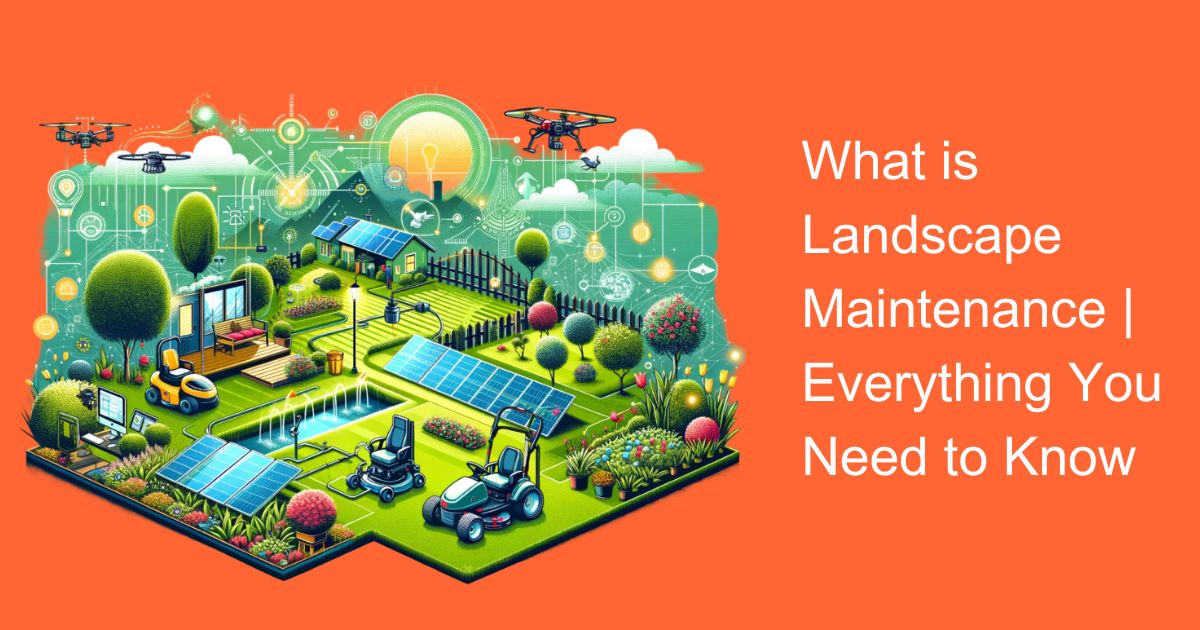Introduction
In a world where urbanization is rapidly reshaping the natural environment, the significance of landscape maintenance cannot be overstated. From bustling metropolitan cities to serene rural areas, landscapes play a pivotal role in enhancing the aesthetic appeal, environmental sustainability, and overall well-being of communities. In the Indian context, where diverse climatic conditions and cultural heritage converge, effective landscape maintenance practices are crucial for preserving the beauty and functionality of outdoor spaces. Let’s delve deeper into what is landscape maintenance and why it’s essential for both public and private sectors.
What is Landscape Maintenance?
Landscape maintenance encompasses a range of activities aimed at preserving, enhancing, and managing outdoor spaces such as parks, gardens, green belts, and public grounds. It involves a holistic approach that integrates horticultural practices, environmental stewardship, and sustainable management techniques. From routine tasks like mowing lawns and pruning trees to more specialized services like irrigation management and pest control, landscape maintenance covers a broad spectrum of activities tailored to meet the unique needs of each site.
The Importance of Landscape Maintenance
Environmental Sustainability:
Well-maintained landscapes contribute to environmental sustainability by mitigating soil erosion, reducing air pollution, and enhancing biodiversity. In India, where rapid urbanization often leads to habitat loss and degradation, preserving green spaces through effective maintenance practices is crucial for conserving native flora and fauna.
Enhanced Aesthetic Appeal:
A well-groomed landscape adds to the visual charm of its surroundings, making it more inviting for residents, visitors, and tourists alike. In cities like Jaipur, Udaipur, and Mysore, renowned for their picturesque gardens and historic landmarks, landscape maintenance plays a vital role in upholding the cultural heritage and architectural beauty of these iconic destinations.
Community Well-being:
Access to well-maintained green spaces has been linked to numerous health benefits, including stress reduction, improved mental health, and increased physical activity. In densely populated Indian cities such as Mumbai and Delhi, where green spaces serve as sanctuaries amidst the concrete jungle, investing in landscape maintenance is essential for promoting public health and well-being.
Economic Value:
Beyond its intrinsic benefits, landscape maintenance also generates significant economic value by boosting property values, attracting tourism, and supporting local businesses. In regions like Kerala’s backwaters and Himachal Pradesh’s hill stations, well-manicured landscapes not only attract tourists but also provide livelihoods for countless individuals working in the tourism and hospitality sectors.
Key Practices in Landscape Maintenance
Regular Lawn Care:
This includes mowing, edging, fertilizing, and aerating lawns to promote healthy grass growth and prevent weed infestation. In India, where lawns are common features in residential complexes, commercial properties, and public parks, maintaining lush green turf is essential for creating inviting outdoor spaces.
Plant Health Care:
Proper pruning, watering, and pest management are essential for maintaining the health and vitality of plants, shrubs, and trees. With India’s diverse climatic zones ranging from tropical rainforests to arid deserts, landscape maintenance practices must be adapted to suit local environmental conditions and plant species.
Irrigation Management:
Efficient water management is critical for sustainable landscape maintenance, particularly in water-stressed regions like Rajasthan and Gujarat. Utilizing drip irrigation systems, rainwater harvesting techniques, and native plant species can help conserve water while ensuring optimal plant health.
Seasonal Maintenance:
Adjusting maintenance practices according to seasonal changes is vital for preserving the beauty and functionality of landscapes throughout the year. From springtime flower displays to autumn leaf cleanup, proactive seasonal maintenance ensures that outdoor spaces remain vibrant and inviting in all seasons.
Challenges and Future Outlook
Despite its importance, landscape maintenance in India faces several challenges, including limited resources, inadequate infrastructure, and competing land-use priorities. Addressing these challenges will require collaborative efforts from government agencies, private stakeholders, and community organizations to implement sustainable management practices, enhance public awareness, and invest in green infrastructure development.
Looking ahead, the future of landscape maintenance in India holds tremendous potential for innovation and growth. By embracing technological advancements such as smart irrigation systems, drone surveillance, and remote monitoring tools, landscape maintenance professionals can improve efficiency, reduce resource consumption, and enhance the resilience of outdoor spaces in the face of climate change and urban development pressures.
Conclusion
In conclusion, landscape maintenance is not merely a routine chore but a fundamental aspect of creating vibrant, sustainable, and livable communities. By prioritizing effective maintenance practices and investing in green infrastructure, India can unlock the full potential of its outdoor spaces to enrich the lives of its citizens and safeguard the natural beauty of its landscapes for generations to come.








